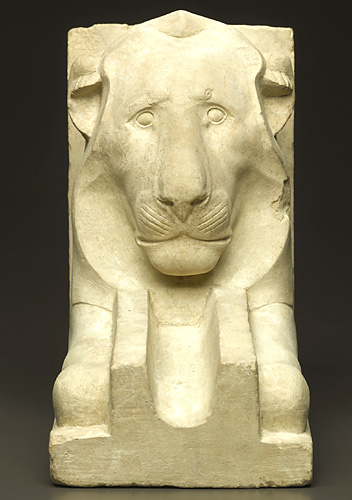Wrapped in rags, bone thin and rabidly obsessed about. No, not another starving starlet — mummies.
For centuries, people have been fascinated by mummified bodies as well as the ruins of ancient Egypt, a trend that shows no signs of slowing. In recent years, Egypt has drawn almost 9 million tourists annually, while movies like “The Mummy Returns” pulled in hundreds of millions.
The writing — whether in hieroglyphics or not — is on the wall: Egypt is hot.
With a strong permanent Egyptian collection but sometimes-weak attendance figures, the Brooklyn Museum hopes to tap into the world’s hunger for Egyptian icons by opening a new exhibit, “Ancient Egyptian Magic: Manipulating Image, Word and Reality.”
The museum even has its own dig site at the Temple Precinct of the Goddess Mut at South Karnak in Egypt. Though, in accordance with Egyptian law, no objects unearthed there can leave the country.
“Many people associate ancient Egypt with magic, and that’s a long-standing idea,” says Edward Bleiberg, the museum’s curator of Egyptian, Classical and Ancient Middle Eastern Art, citing the Book of Exodus as an example.
Bleiberg told GO Brooklyn that visitor surveys show that people coming to the museum are very interested in examples of Egyptian mysticism. Case in point, a figurine called a “shabti” that was buried with the dead and would perform hard labor for the deceased in the afterlife.
“This is probably the origin story of ‘the Sorcerer’s Apprentice,’ ” Bleiberg explains. “And this is the same story that was adapted by Walt Disney in ‘Fantasia.’ The origin of that story is in ancient Egypt.”
Other pieces in the exhibit, which is a small but powerful supplement to the staggering permanent Egyptian collection, include a lion’s head gargoyle, meant to protect a home from evil; a head rest meant to watch over a woman during pregnancy or childbirth; and a scarab-shaped amulet that supposedly protected its owner’s heart from revealing wrongdoings at his final judgment. Bleiberg speculates the amulet was removed from a mummy as early as 1820.
In those days, according to Bleiberg, mummies were often cut open so that the treasures buried close to their bodies could be taken. “At that time people treated antiquities completely differently than we would today,” says Bleiberg, “Today, when we have complete mummies, we will do CAT scans to see what is inside.”
Also showcased is a bronze statuette of the goddess Isis.
“It’s very beautiful,” says Bleiberg. “And aesthetically, I am interested in it because it’s three dimensional. I love how her arms come out to you holding the magic wand, which is a cobra.”
Snakes, he explains, are another large part of Egyptian mythology, as kings used them for protection.
“The Egyptians were very aware that snakes are dangerous animals,” explains Bleiberg, citing a papyrus in the Brooklyn Museum’s collection that holds records of various medical and magical treatments for snakebites. “Because they were dangerous, their power could also be used to protect against other powers. The Uraeus, or cobra, protected the king when [he] wore it on his brow. It is a regular part of the king’s protective gear.”
Continuing in their efforts to bring more Egyptian artifacts to the Brooklyn arts arena, the Museum will open another exhibit, “Pharaohs, Queens and Goddesses,” which will focus on work relating to the powerful female leaders of ancient Egypt. Presented in conjunction with the soon-to-be-opened Elizabeth A. Sackler Center for Feminist Art at the Museum, the show will feature art depicting Cleopatra, Nefertiti, and Hatshepsut, the legendary fifth pharaoh of the Eighteenth Dynasty.
“Ancient Egyptian Magic” will run until August, although if you’re hoping to soak up some of your own magical protection, you might visit sooner rather than later — it could be bad luck not to.

Ancient Egyptian Magic: Manipulating Image, Word and Reality will be on display until Aug. 12 at the Brooklyn Museum, located at 200 Eastern Pkwy. at Washington Avenue in Prospect Heights. Open Wednesday through Friday from 10 am until 5 pm and on weekends from 11 am until 6 pm. Admission is $8, $4 for seniors and students, children under 12 are admitted for free. For information, call (718) 638-5000 or visit the Web site at www.brooklynmuseum.o….























